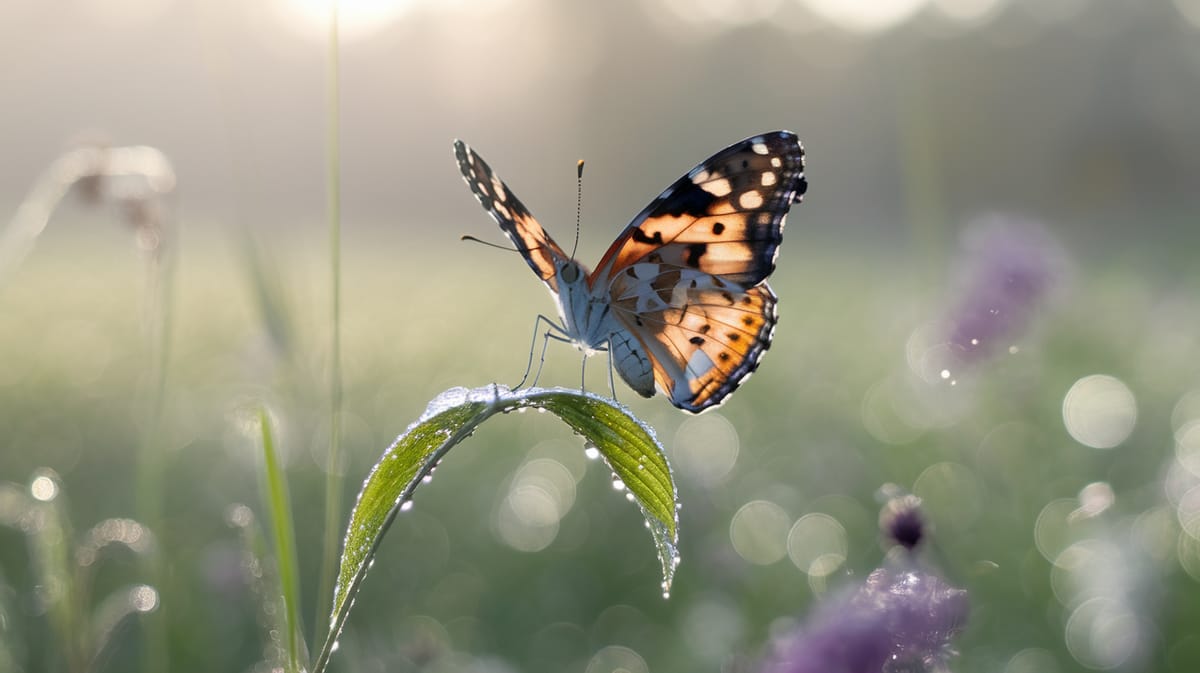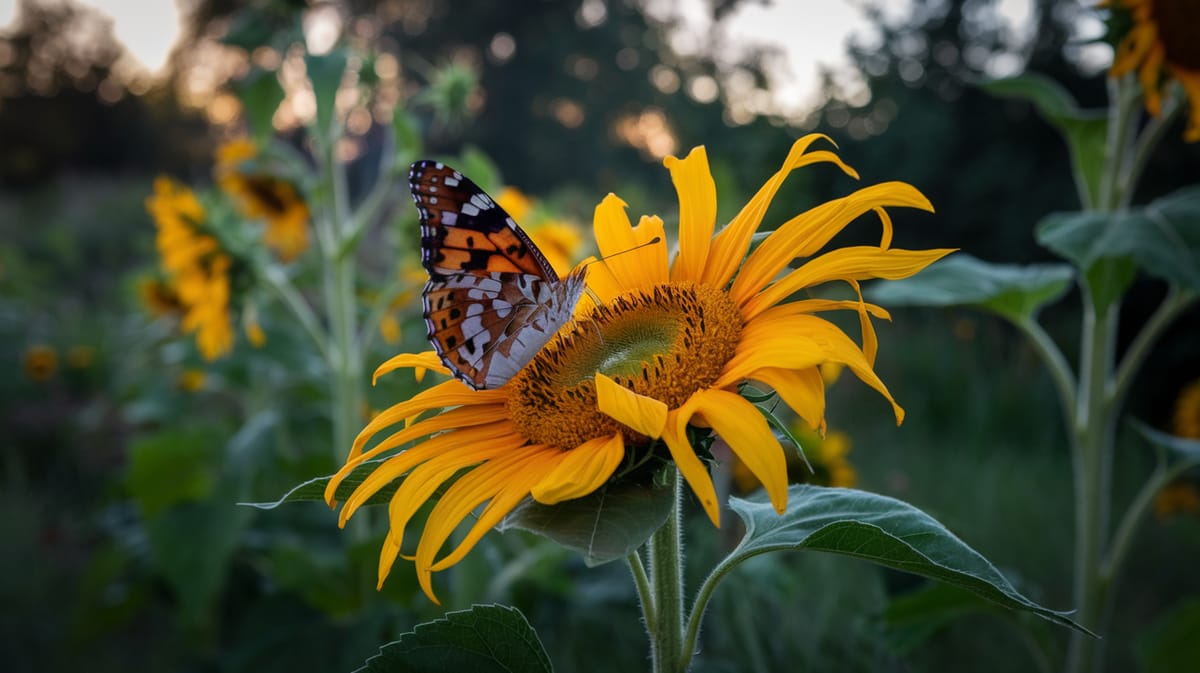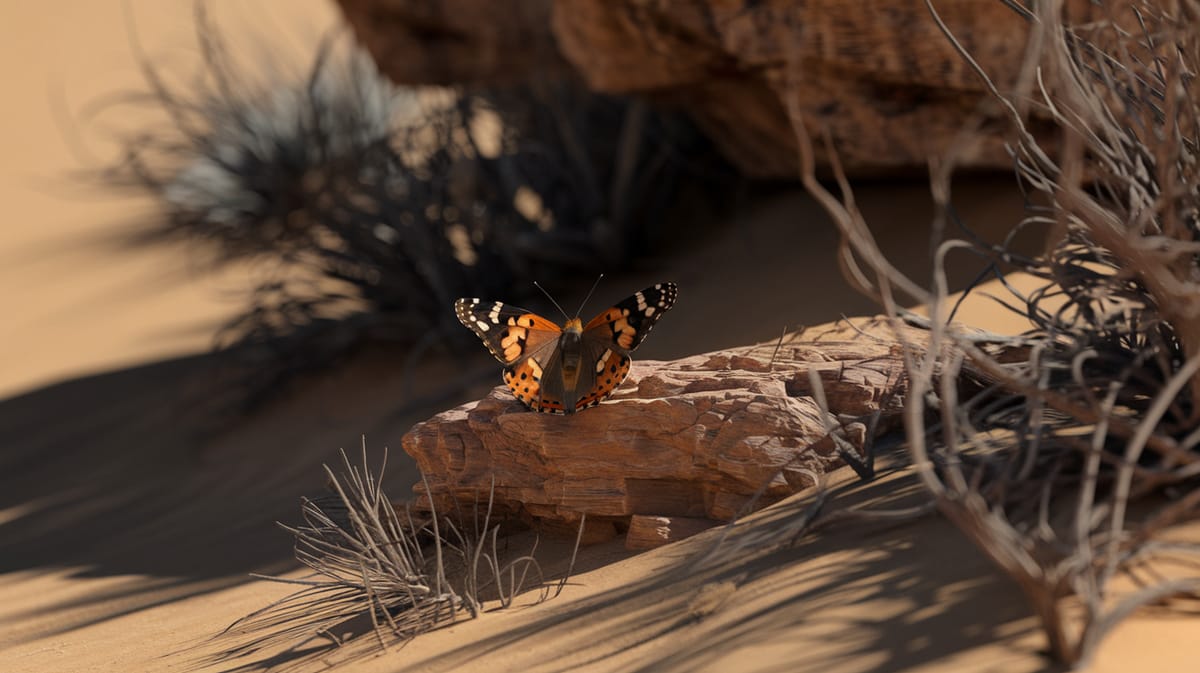Painted Lady Butterfly
Wings painted like a sunset, the Painted Lady Butterfly is a global traveler known for epic migrations. Its presence supports pollination and enriches ecosystems worldwide.

Key Insights at a Glance
Did You Know?
Taxonomy & Classification
Painted Lady butterflies are global travelers known for their striking wing patterns and incredible migratory behavior, reflecting their evolutionary success and adaptability. Let's understand the evolutionary journey and classification of these remarkable pollinators.
Global Reach
Painted Ladies are found on every continent except Antarctica, making them one of the most widespread butterfly species.
Migratory Adaptation
Evolving around 40 million years ago, their ability to migrate long distances helps them survive diverse climates and environments.
Lifecycle and Growth
A remarkable journey of transformation from Egg to Adult.
Egg
Tiny green eggs are laid on host plants, each containing a developing larva that will emerge ready to feed.
Larva
Caterpillars feed voraciously on host plant leaves, growing rapidly and shedding their exoskeletons multiple times.
Pupa
Encased in a chrysalis, transformation occurs as tissues reorganize into the adult butterfly.
Adult
Vibrant butterflies emerge, ready to feed on nectar and engage in long-distance migration.
Dietary Habits
A keen nectar feeder with vibrant wing patterns, it adapts to various flowering plants to meet its dietary needs.
| DIET TYPE | DESCRIPTION |
|---|---|
| Primary Diet | Primarily feeds on nectar from thistles and sunflowers, using its long proboscis to access deep flowers. |
| Secondary Diet | Includes sap and honeydew, offering additional nutrients, especially in areas with scarce floral resources. |
| Occasional | Occasionally consumes tree sap and rotting fruit, taking advantage of available resources when flowers are limited. |

Behaviour and Adaptations
Discover the fascinating traits that allow the Painted Lady Butterfly to thrive across diverse environments.
Long-Distance Migration
Travels thousands of miles across continents to reach optimal breeding grounds.
Rapid Reproduction
Lays hundreds of eggs over a short lifespan, ensuring species survival.
Versatile Feeding
Feeds on a wide range of host plants, adapting to different habitats.
Ecosystem Impact
The Painted Lady Butterfly plays a crucial role in ecological sustainability through pollination, food web support, and as a migratory species.
Pollination Partner
Aids in pollinating a variety of plants, contributing to biodiversity and ecosystem health.
Food Web Connector
Serves as a food source for birds and other predators, supporting diverse ecosystems.
Migratory Influencer
Influences plant dynamics across regions by migrating vast distances, promoting genetic diversity.
Conservation Challenges
Understanding and addressing the major threats to Painted Lady Butterfly populations.
Habitat Loss
Urban development and agriculture reduce their natural habitats.
Pesticide Use
Chemical pesticides harm butterflies and their food sources.
Climate Change
Altered weather patterns disrupt migration and breeding cycles.
Frequently Asked Questions
How long do Painted Lady Butterfly live?
Painted Lady Butterflies typically live for about two to four weeks as adults. Their entire life cycle, from egg to adult, spans around six to eight weeks. Their lifespan can vary depending on environmental conditions and availability of food sources.
What do Painted Lady Butterfly eat?
Painted Lady Butterflies feed mainly on nectar from a variety of flowering plants such as thistles, asters, and sunflowers. As caterpillars, they consume the leaves of host plants like mallow, hollyhock, and thistle.
Are Painted Lady Butterfly poisonous?
Painted Lady Butterflies are not poisonous. They are harmless to humans and other animals. Their bright colors serve as a warning to predators about their unpleasant taste, but they do not contain toxins.
Are Painted Lady Butterfly endangered?
Painted Lady Butterflies are not considered endangered. They have a widespread distribution across many continents and are known for their strong migratory patterns, which contribute to their robust population numbers.
What do Painted Lady Butterfly symbolize?
Painted Lady Butterflies often symbolize transformation, freedom, and renewal. They are also seen as messengers of change and hope due to their migratory nature and the stages of metamorphosis they undergo.
Do Painted Lady Butterfly bite?
Painted Lady Butterflies do not bite. They lack any biting or stinging mechanisms. Their proboscis is adapted for sipping nectar from flowers and is not capable of inflicting harm on humans or animals.
What color are Painted Lady Butterfly?
Painted Lady Butterflies are predominantly orange and brown with black and white spots on their wings. The underside of their wings features intricate patterns of browns and grays, providing camouflage when their wings are closed.
Does a Painted Lady Butterfly have wings?
Yes, a Painted Lady Butterfly has wings. Its wings are large and colorful, allowing it to fly long distances. The wings are key to their migratory behavior and play a crucial role in their survival and reproduction.
What does a Painted Lady Butterfly look like?
A Painted Lady Butterfly has orange-brown wings with black and white spots on the upper side and more subdued patterns on the underside. It has a slender body, long antennae, and a wingspan of about 2 to 3 inches.
Is a Painted Lady Butterfly an insect?
Yes, a Painted Lady Butterfly is an insect. It belongs to the order Lepidoptera, which includes butterflies and moths. It undergoes complete metamorphosis, passing through the egg, larva (caterpillar), pupa (chrysalis), and adult stages.
Related Insects
Discover insects with similar characteristics to Painted Lady Butterfly - including shared habitats, diets, and taxonomic classifications
Share this profile
Help others discover Painted Lady Butterfly
